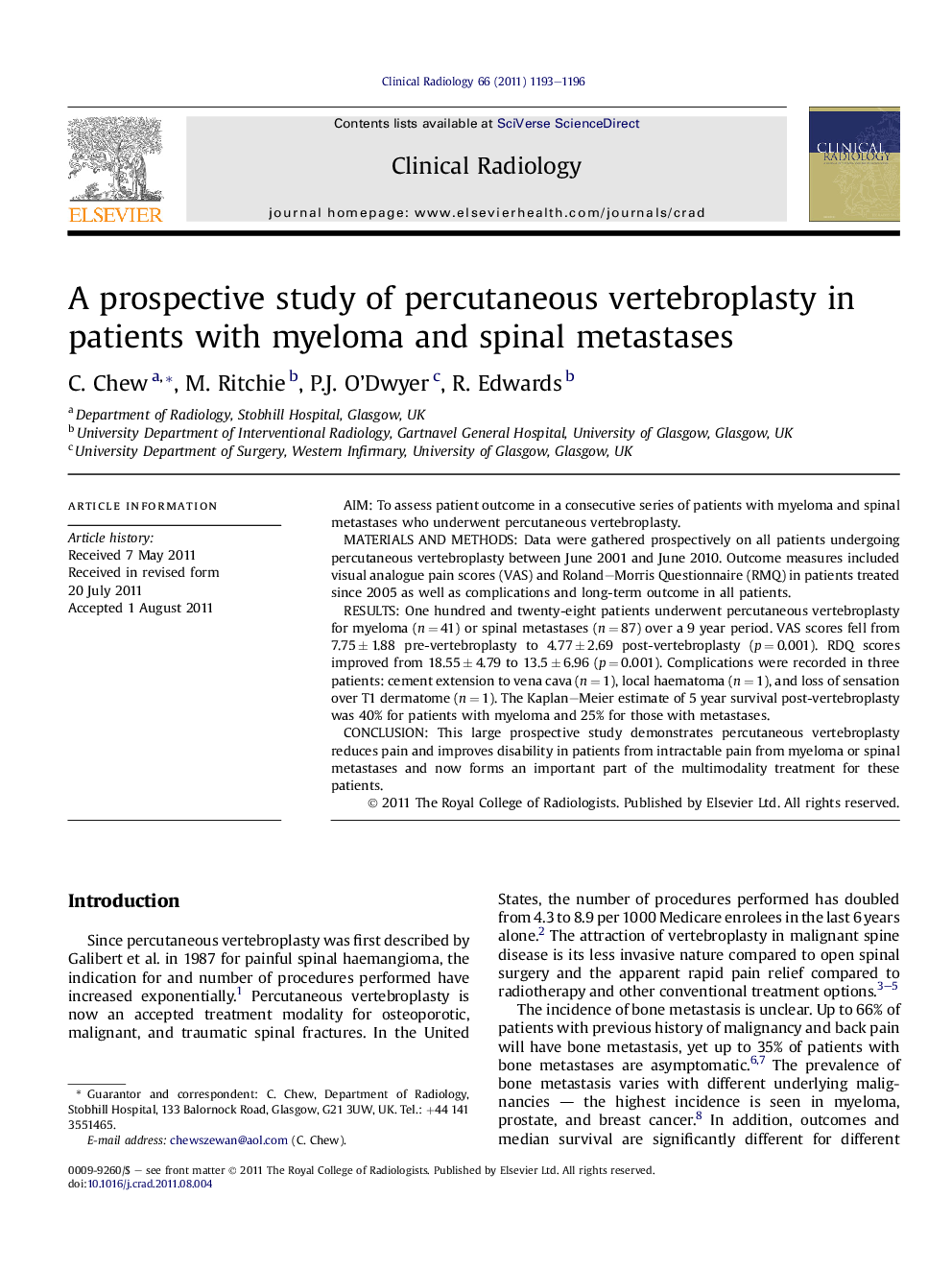| Article ID | Journal | Published Year | Pages | File Type |
|---|---|---|---|---|
| 3982413 | Clinical Radiology | 2011 | 4 Pages |
AimTo assess patient outcome in a consecutive series of patients with myeloma and spinal metastases who underwent percutaneous vertebroplasty.Materials and methodsData were gathered prospectively on all patients undergoing percutaneous vertebroplasty between June 2001 and June 2010. Outcome measures included visual analogue pain scores (VAS) and Roland–Morris Questionnaire (RMQ) in patients treated since 2005 as well as complications and long-term outcome in all patients.ResultsOne hundred and twenty-eight patients underwent percutaneous vertebroplasty for myeloma (n = 41) or spinal metastases (n = 87) over a 9 year period. VAS scores fell from 7.75 ± 1.88 pre-vertebroplasty to 4.77 ± 2.69 post-vertebroplasty (p = 0.001). RDQ scores improved from 18.55 ± 4.79 to 13.5 ± 6.96 (p = 0.001). Complications were recorded in three patients: cement extension to vena cava (n = 1), local haematoma (n = 1), and loss of sensation over T1 dermatome (n = 1). The Kaplan–Meier estimate of 5 year survival post-vertebroplasty was 40% for patients with myeloma and 25% for those with metastases.ConclusionThis large prospective study demonstrates percutaneous vertebroplasty reduces pain and improves disability in patients from intractable pain from myeloma or spinal metastases and now forms an important part of the multimodality treatment for these patients.
